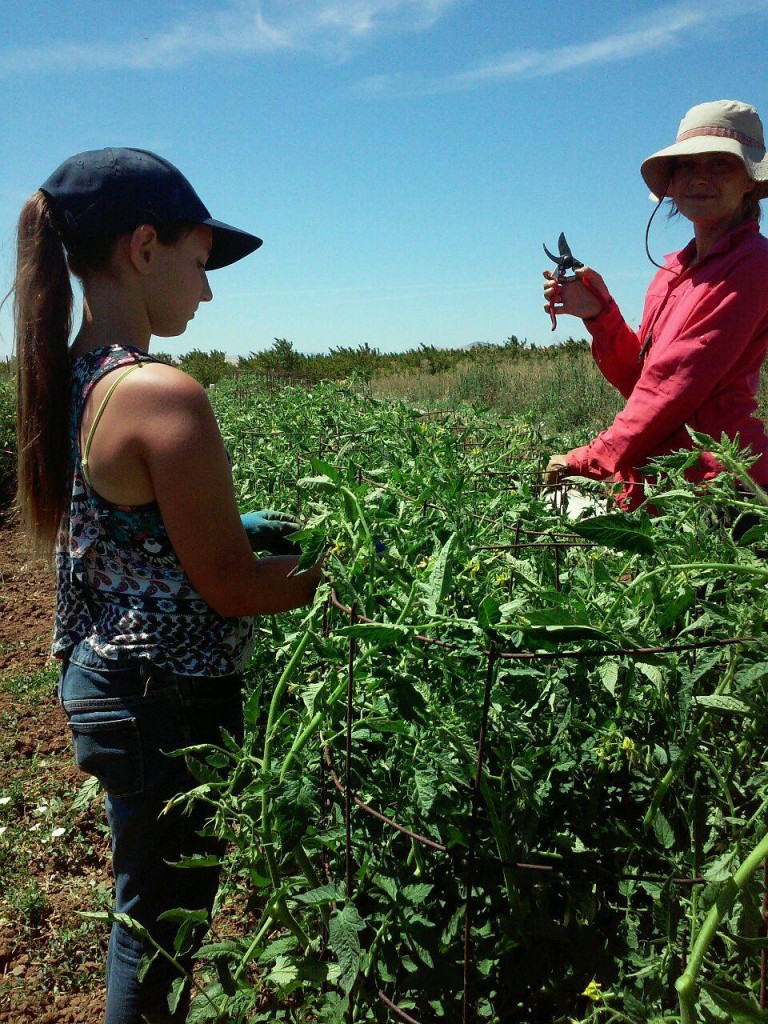THIS WEEK’S FRUIT
Golden Sweet Apricots
Frog Hollow Farm, Brentwood, CA
Following up two of our largest varieties is the Golden Sweet, a smaller apricot that makes up for whatever it lacks in size with its rich flavor. Though we may bake pastries featuring other varieties, the Golden Sweet is our variety of choice for our best-selling apricot conserve. An- other California born and bred variety, it has a brilliant golden orange skin with a soft blush.
Red Top Peaches
Frog Hollow Farm, Brentwood, CA
The big, bold Red Top lives up to its name and is almost fully blushed red over yellow. One of the first freestone varieties of the season, its flesh is consistently firm and sweet. With its unique coloration and ease of slicing, the Red Top is especially well-suited for presentation.
Ruby Diamond Nectarines
Frog Hollow Farm, Brentwood, CA
Slightly smaller on average than the Ruby Grand, the Ruby Diamond is our best early-season nectarine in Farmer Al’s opinion. It’s a brilliantly crimson freestone with a very good eating quality. Juicy and firm it has the perfect blend of tangy and sweet that nectarine fans love.
Santa Rosa Plums
Frog Hollow Farm, Brentwood, CA
Famed California horticulturist Luther Burbank bred this plum in his Santa Rosa plant research center. Red-skinned with a purple bloom, its amber flesh gets flushed with red. It’s plump perfection with tender flesh that’s extremely sweet and juicy. A bit of tartness in the skin bal- ances out the sweetness.
A NOTE FROM MARLENE
Dear CSA family,
The summer solstice marks the true beginning of summer, and we are cer- tainly feeling it here. All sorts of fruits are ripening, and the extreme heat we had early last week caused even more to ripen at once than usual. Both pack- ing sheds are working non-stop, sorting, packing, and loading up fruit that is destined for your kitchen, supermarkets, and restaurants.
Out in the vegetable patch, the tomatoes are growing like crazy. Last year
we only used cages to support the tomatoes, but this year we are also trying
to weave our tomatoes in a trellis system. We are using a system called the Florida weave, which I learned at the farm I worked on in Oregon. It is very important to keep your tomatoes pruned to only a few leaders when using this trellising method, otherwise the plants will be too big and heavy to be sup- ported.
Within each row of tomatoes we put in steel t-posts at approximately 8 foot intervals. Using tomato twine, we weave around each tomato, going in front of the first plant, behind the next, and so on. Once you finish a row, you come back and weave along the other side of the plant so that you create a (very long) figure eight pattern that holds the plants in place. It is also very impor- tant that at each t-post you make a special knot to hold the string in place, which keeps the string taut and also keeps the whole line from falling apart
if an animal decides to chew through a segment! You continue to make this weaving pattern every 8 inches or so up the t-posts.
Kristin and I have had some enthusiastic help now that school is out: Farmer Al’s daughter Millie has been helping us out in the garden and learning to prune tomatoes and Sarah’s daughter Annalise has been keeping a close eye on the chickens in the heat. I think we might have some farmers in the making!
Happy solstice,
Marlene

 Follow
Follow

